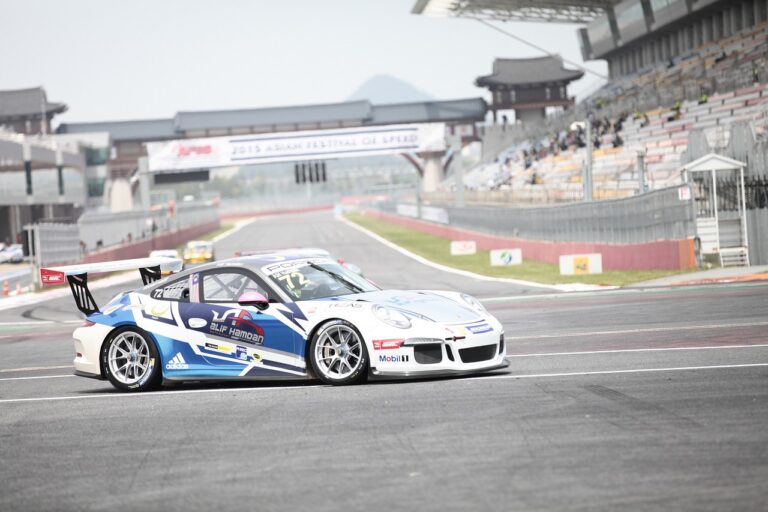Addressing Challenges in Suspension System Manufacturing for Electric Last-mile Delivery Vehicles
bet book 250.com, 11xplay online, yolo 247 login:Addressing Challenges in Suspension System Manufacturing for Electric Last-mile Delivery Vehicles
Suspension systems are a crucial component of any vehicle, as they help absorb shocks and vibrations from the road, providing a smooth and comfortable ride. This is especially important for electric last-mile delivery vehicles, which are becoming increasingly popular due to their eco-friendly nature and cost-effectiveness. However, manufacturing suspension systems for these vehicles comes with its own set of challenges that need to be addressed in order to ensure optimal performance and safety.
In this blog post, we will discuss some of the key challenges in suspension system manufacturing for electric last-mile delivery vehicles and provide insights on how manufacturers can overcome them.
The Importance of Suspension Systems for Electric Last-mile Delivery Vehicles
Before we delve into the challenges faced in manufacturing suspension systems for electric last-mile delivery vehicles, let’s first understand why these systems are so important for these types of vehicles.
Electric last-mile delivery vehicles are designed to navigate through urban environments to deliver goods to their final destination. These vehicles often encounter rough roads, potholes, speed bumps, and other obstacles that can cause discomfort to the driver and potentially damage the cargo.
A well-designed suspension system helps to absorb these shocks and vibrations, providing a smoother and more comfortable ride for the driver and protecting the cargo from damage. Additionally, a properly functioning suspension system can improve the vehicle’s handling, stability, and overall performance on the road.
Challenges in Suspension System Manufacturing for Electric Last-mile Delivery Vehicles
Now that we understand the importance of suspension systems for electric last-mile delivery vehicles, let’s discuss some of the key challenges faced in manufacturing these systems:
1. Weight Distribution: Electric last-mile delivery vehicles are often heavier than traditional vehicles due to the weight of the battery packs. This can place additional stress on the suspension system, requiring careful engineering to ensure optimal weight distribution and balance.
2. Durability: Electric last-mile delivery vehicles are subjected to frequent starts and stops, as well as heavy loads, which can put a strain on the suspension system. Manufacturers need to design suspension components that are durable and can withstand these demands without compromising performance.
3. Battery Placement: The placement of the battery packs in electric last-mile delivery vehicles can impact the design of the suspension system. Manufacturers must consider the location of the batteries and how they affect the vehicle’s center of gravity and weight distribution when designing suspension components.
4. Environmental Factors: Electric last-mile delivery vehicles operate in diverse environmental conditions, including extreme temperatures, humidity, and road conditions. Manufacturers need to ensure that suspension components are resistant to corrosion, rust, and other environmental factors that can impact performance and longevity.
5. Cost: Manufacturing suspension systems for electric last-mile delivery vehicles can be costly, especially when considering the unique requirements and components needed for these vehicles. Manufacturers need to balance cost-effectiveness with quality to produce reliable and efficient suspension systems.
6. Regulatory Compliance: Electric last-mile delivery vehicles are subject to various regulations and standards related to safety, emissions, and performance. Manufacturers need to ensure that suspension systems meet these requirements to ensure compliance and avoid potential legal issues.
Addressing these challenges requires collaboration between manufacturers, engineers, designers, and other stakeholders to develop innovative solutions that meet the unique needs of electric last-mile delivery vehicles.
How Manufacturers Can Overcome Challenges in Suspension System Manufacturing
To overcome the challenges in suspension system manufacturing for electric last-mile delivery vehicles, manufacturers can implement the following strategies:
1. Research and Development: Investing in research and development is essential to identify emerging technologies, materials, and design techniques that can improve suspension system performance and durability.
2. Collaboration: Working closely with suppliers, partners, and customers can help manufacturers gain insights into market trends, customer preferences, and regulatory requirements to develop tailored solutions for electric last-mile delivery vehicles.
3. Testing and Validation: Conducting rigorous testing and validation of suspension components is critical to ensure they meet performance, safety, and quality standards. Manufacturers should test components under various conditions to simulate real-world scenarios and identify any potential issues.
4. Continuous Improvement: Continuously evaluating and improving suspension system designs, materials, and manufacturing processes can help manufacturers stay ahead of the curve and deliver high-quality products that meet customer expectations.
5. Sustainability: Embracing sustainable practices, such as using recycled materials, reducing waste, and minimizing energy consumption, can help manufacturers create environmentally-friendly suspension systems for electric last-mile delivery vehicles.
6. Training and Development: Investing in employee training and development can help manufacturers build a skilled workforce capable of designing, developing, and manufacturing innovative suspension systems for electric last-mile delivery vehicles.
By implementing these strategies, manufacturers can address the challenges in suspension system manufacturing for electric last-mile delivery vehicles and develop high-quality, reliable, and efficient solutions that meet the evolving needs of the market.
FAQs
Q: What are the key components of a suspension system for electric last-mile delivery vehicles?
A: The key components of a suspension system for electric last-mile delivery vehicles include shock absorbers, springs, struts, control arms, and sway bars.
Q: How can manufacturers ensure the durability of suspension components for electric last-mile delivery vehicles?
A: Manufacturers can ensure the durability of suspension components by using high-quality materials, conducting thorough testing and validation, and implementing proper maintenance practices.
Q: How does the weight distribution of electric last-mile delivery vehicles impact the design of suspension systems?
A: The weight distribution of electric last-mile delivery vehicles can impact the design of suspension systems by requiring careful engineering to ensure optimal weight distribution and balance for improved performance and safety.
Q: What role does regulatory compliance play in the manufacturing of suspension systems for electric last-mile delivery vehicles?
A: Regulatory compliance is essential in the manufacturing of suspension systems for electric last-mile delivery vehicles to ensure that components meet safety, emissions, and performance standards set forth by regulatory bodies.
Q: How can manufacturers reduce costs in the manufacturing of suspension systems for electric last-mile delivery vehicles?
A: Manufacturers can reduce costs in the manufacturing of suspension systems by implementing lean manufacturing practices, optimizing supply chain processes, and sourcing cost-effective materials and components.
In conclusion, addressing challenges in suspension system manufacturing for electric last-mile delivery vehicles requires a holistic approach that encompasses research and development, collaboration, testing and validation, continuous improvement, sustainability, and training and development. By adopting these strategies, manufacturers can overcome obstacles and deliver high-quality suspension systems that meet the unique needs of electric last-mile delivery vehicles.







